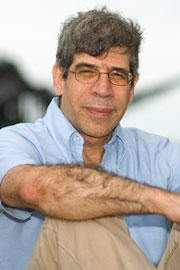NIH Award from the National Institute of General Medical Sciences
Genetic Basis of Species Differences in Drosophila
- Principal Investigator: Jerry Coyne, PhD, Professor, Department of Ecology and Evolution, Biological Sciences Collegiate Division; Committee on Genetics; Committee on Evolutionary Biology
- Start Date: August 31, 2009
- Total Award Amount: $42,426
Public Health Relevance
Our results may be relevant to understanding the origin of species in other animal groups, including humans.
Project Description
The long-term goals of our laboratory are to understand though genetic analysis the evolutionary forces producing new species and species differences in behavioral and morphological traits, to identify the genes involved in such differences and, ultimately, to determine if there are general patterns in the genetics of speciation. We propose to study these questions in two pairs of recently-diverged sister species in the Drosophila melanogaster subgroup.
Our specific questions are the following: 1. What are genetic bases of hybrid male sterility and morphological and behavioral differences between D. santomea and D. yakuba? These species show strong sexual isolation and hybrid male sterility, as well as strong differences in abdominal pigmentation and male courtship song. We propose to use fine-structure molecular mapping to derive a small set of candidate genes affecting pigmentation and hybrid sterility, as well as an initial genome-wide QTL mapping study of an interspecific difference in male mating song that may play a role in sexual isolation.
2. What are the genes responsible for sexual isolation between D. simulans and D. mauritiana? Our QTL mapping of sexual isolation between these two species has revealed several small regions of the genome affecting mate discrimination. We propose to localize "sexual isolation" genes more accurately in both sexes using fine-structure genetic mapping.
3. How much introgression is permissible among species? We propose to determine how much mixing between separately-evolved species' genomes is permissible by constructing laboratory 'hybrid swarms' between pairs of closely-related species, and following the evolution of molecularly marked chromosome segments, diagnostic morphological traits, and sexual isolation over several years.
4. What explains anomalies in the "hybrid zone" and genetic composition of hybrids in the wild? Naturally- occurring hybrids found on Sao Tome Island are peculiar: they are all male, all F1 hybrids having a D. santomea mother, and nearly all of them occur at high altitude outside the range of either parental species.
We will perform laboratory studies of tolerance and preference to understand these anomalies.
This award is funded under the American Recovery and Reinvestment Act of 2009, NIH Award number: 3R01GM058260-12S1

Jerry Coyne, PhD,
Professor, Department of Ecology and Evolution, Biological Sciences Collegiate Division; Committee on Genetics; Committee on Evolutionary Biology
